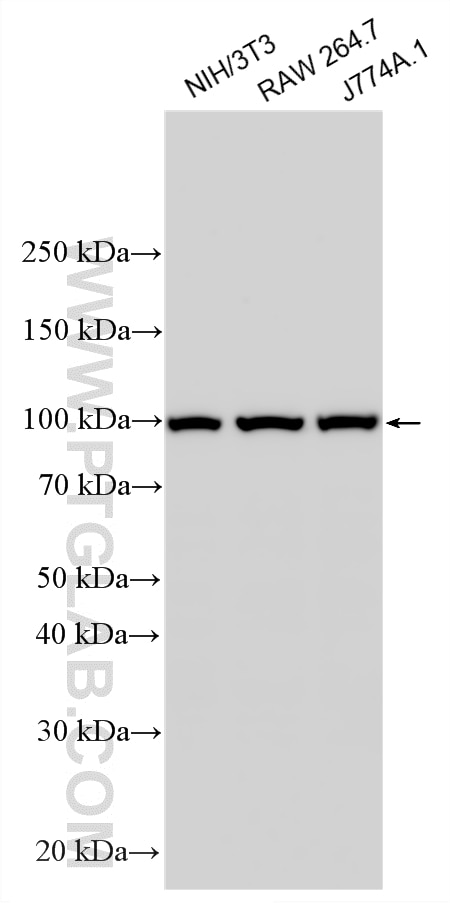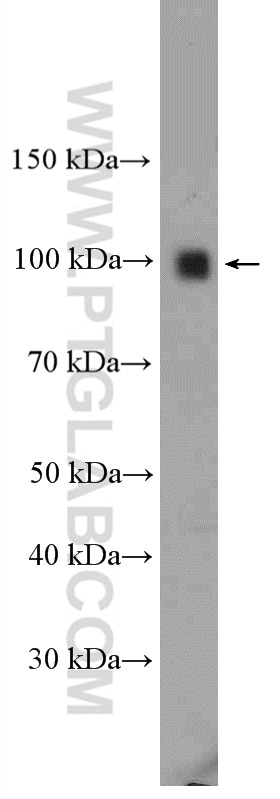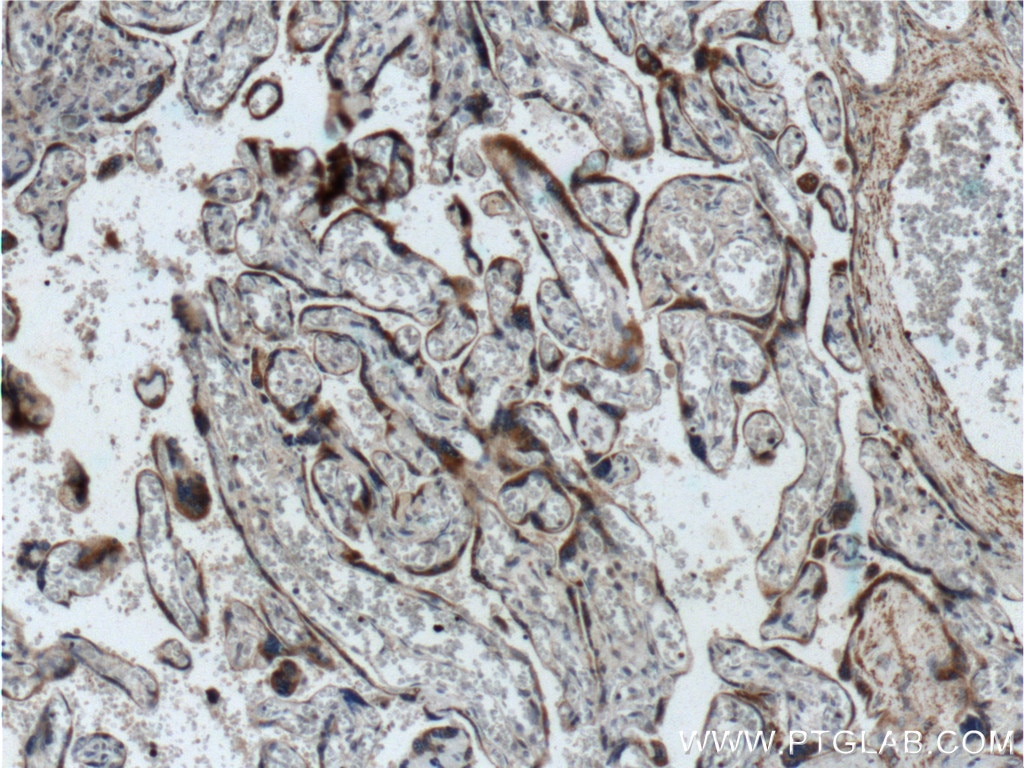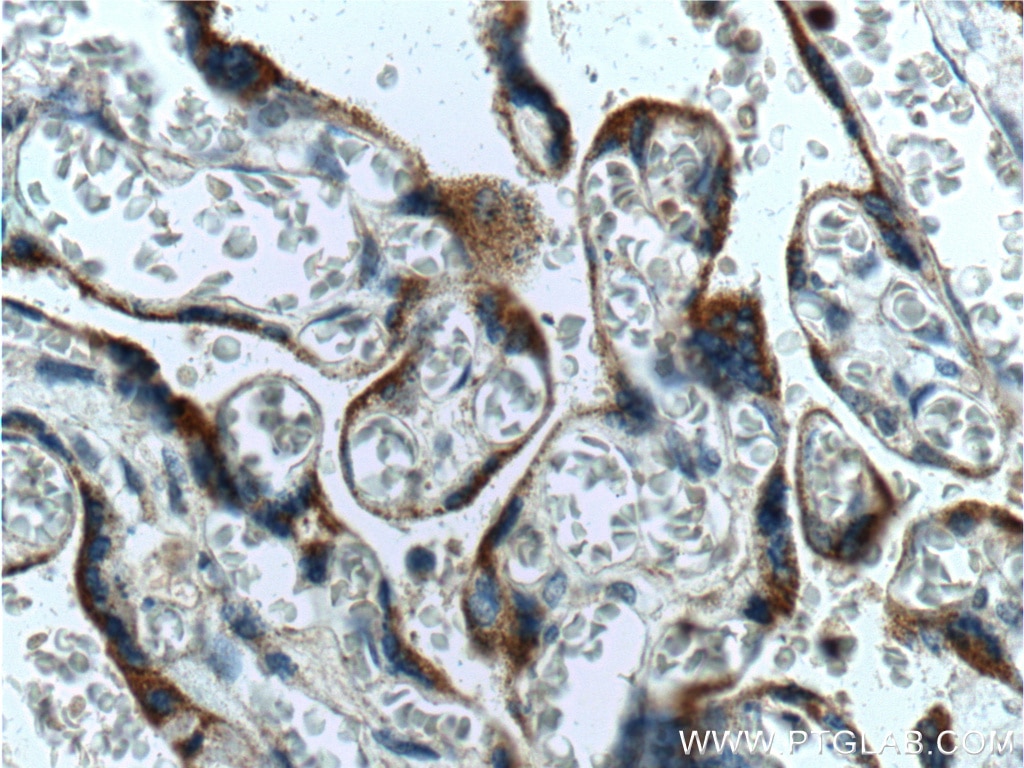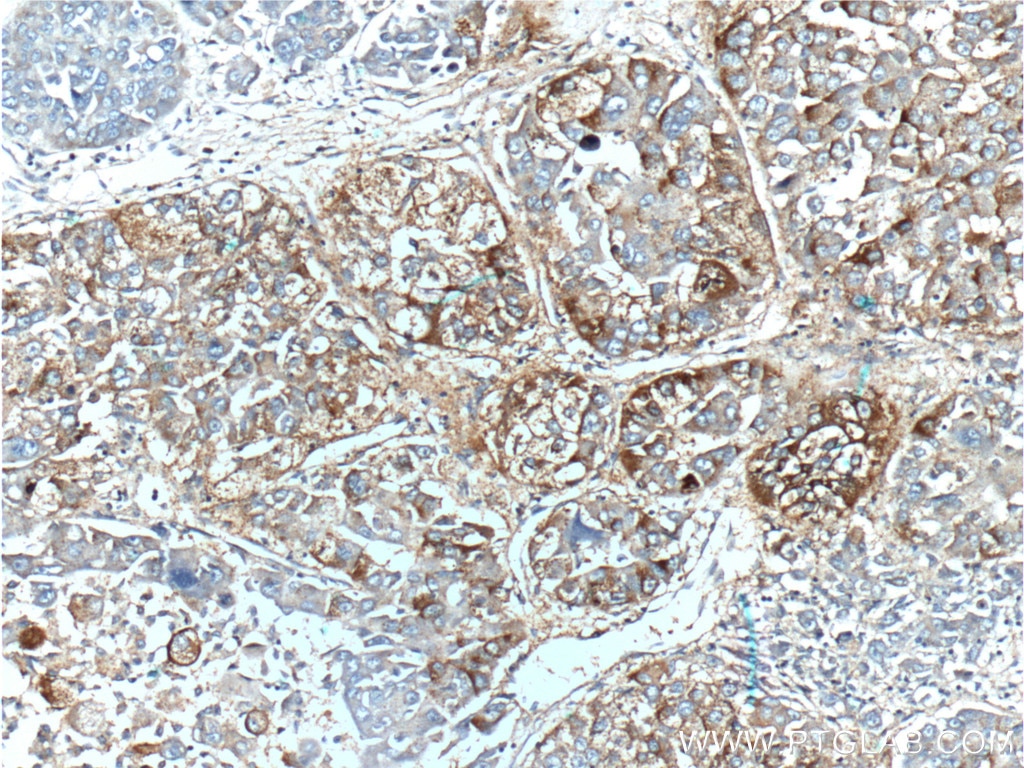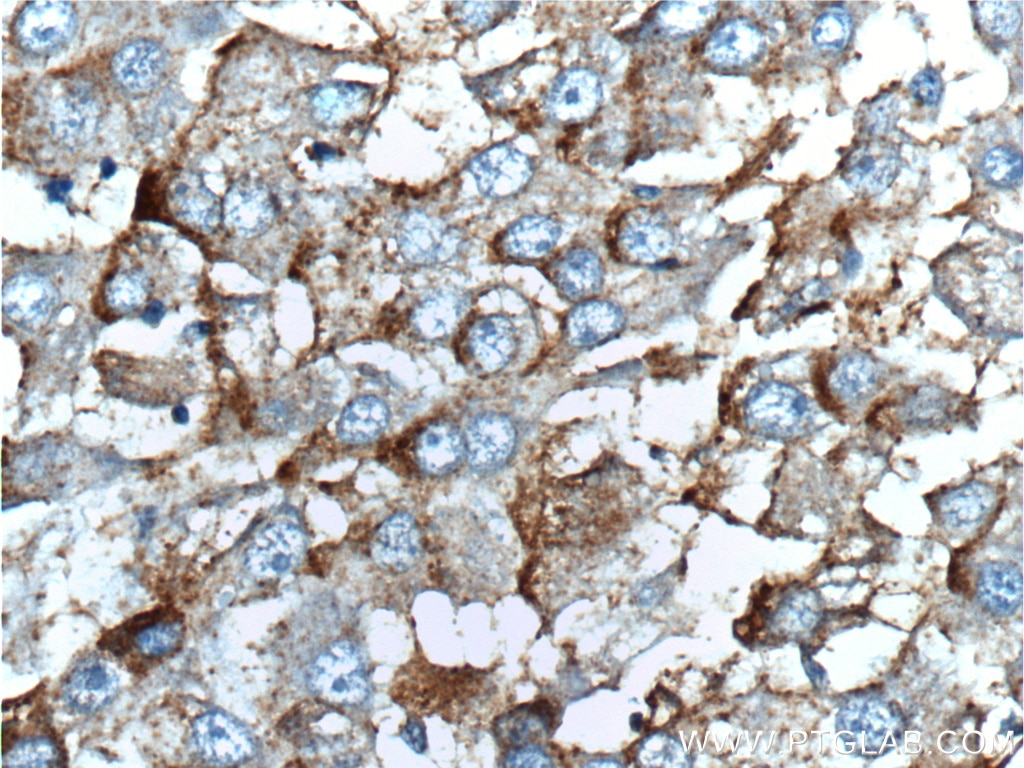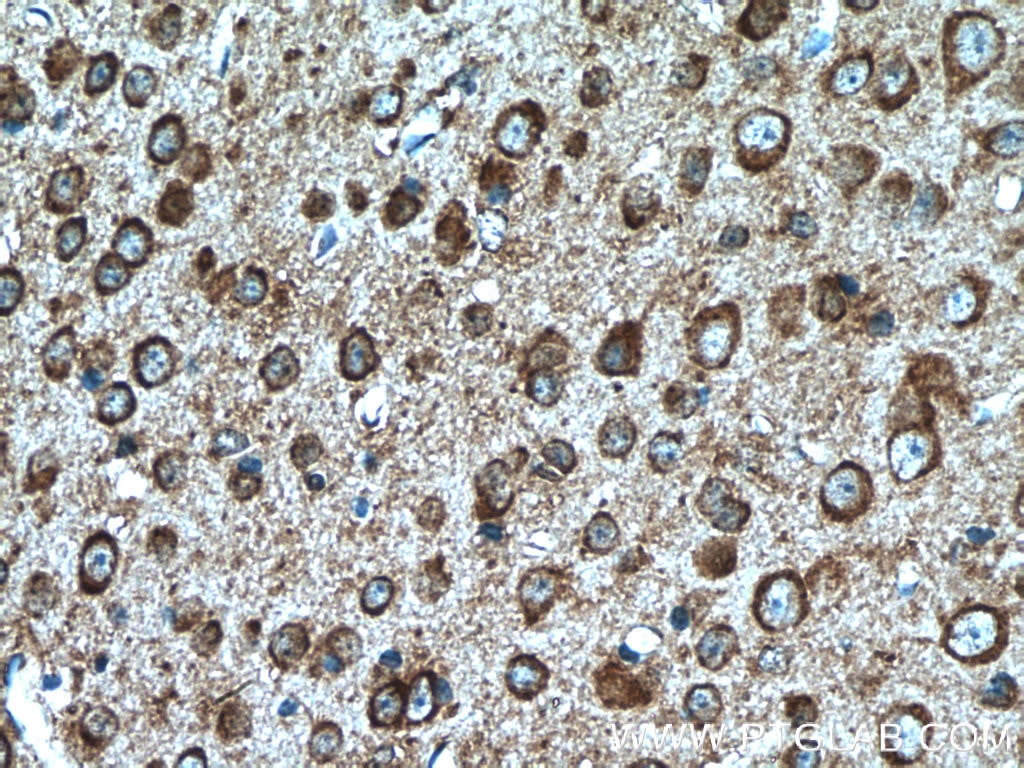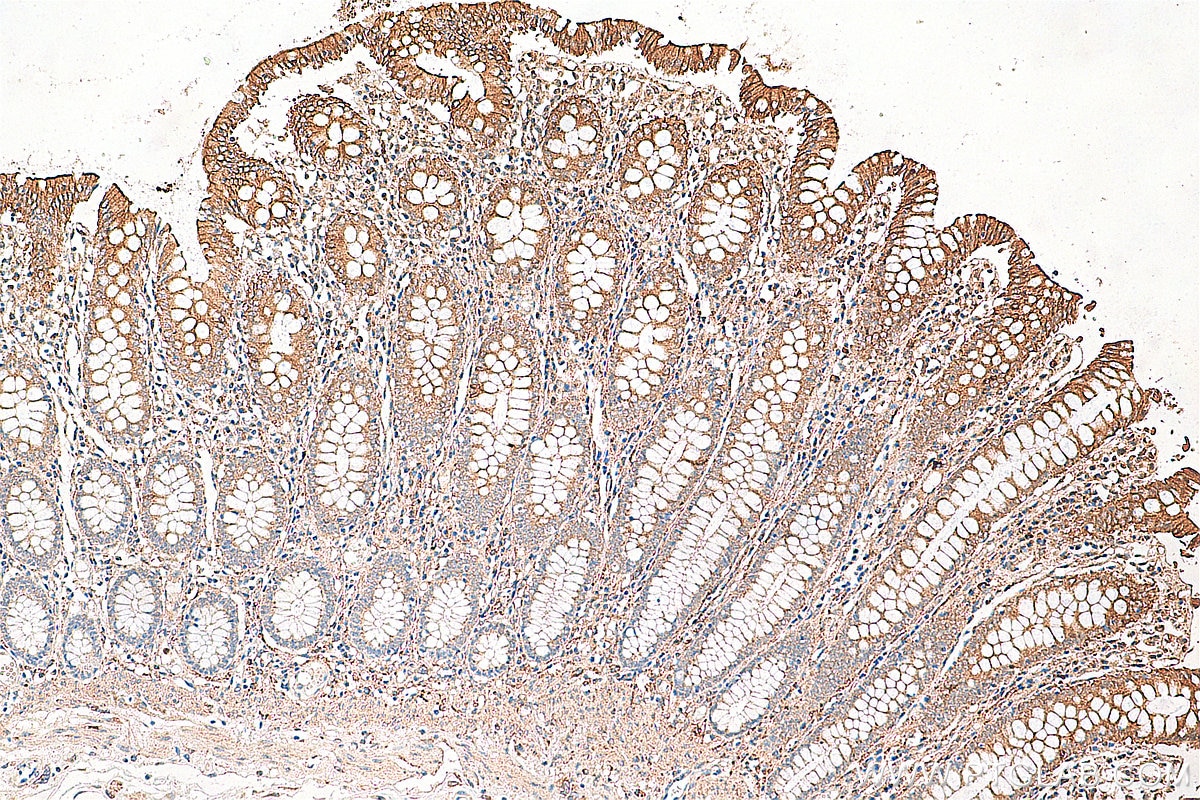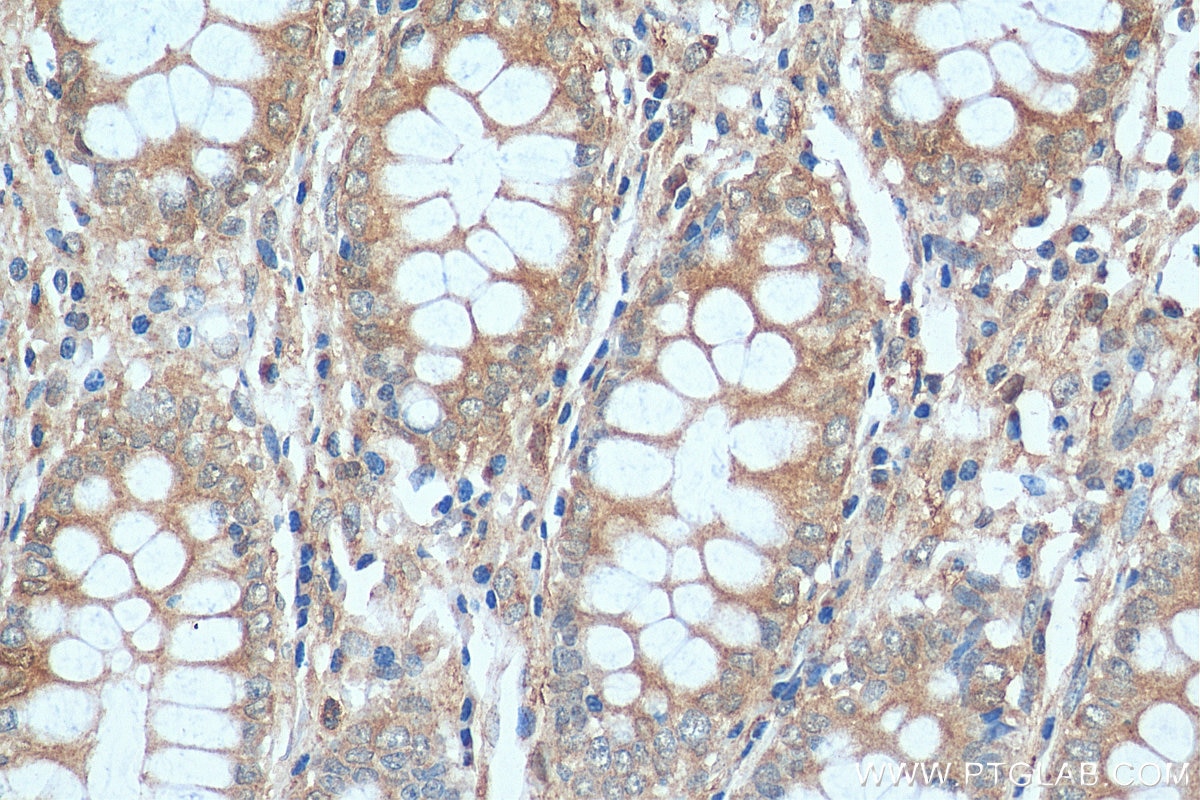Tested Applications
| Positive WB detected in | NIH/3T3 cells, mouse liver tissue, RAW 264.7 cells, J774A.1 cells |
| Positive IHC detected in | human placenta tissue, mouse brain tissue, human liver cancer tissue, human colon tissue Note: suggested antigen retrieval with TE buffer pH 9.0; (*) Alternatively, antigen retrieval may be performed with citrate buffer pH 6.0 |
Recommended dilution
| Application | Dilution |
|---|---|
| Western Blot (WB) | WB : 1:500-1:1000 |
| Immunohistochemistry (IHC) | IHC : 1:100-1:400 |
| It is recommended that this reagent should be titrated in each testing system to obtain optimal results. | |
| Sample-dependent, Check data in validation data gallery. | |
Product Information
19811-1-AP targets TLR4 in WB, IHC, IF, IP, CoIP, ChIP, ELISA, Microtiter plate binding assay applications and shows reactivity with human, mouse, rat samples.
| Tested Reactivity | human, mouse, rat |
| Cited Reactivity | human, mouse, rat, pig, rabbit, canine, chicken, zebrafish, hamster, duck |
| Host / Isotype | Rabbit / IgG |
| Class | Polyclonal |
| Type | Antibody |
| Immunogen |
CatNo: Ag13841 Product name: Recombinant human TLR4 protein Source: e coli.-derived, PGEX-4T Tag: GST Domain: 653-839 aa of BC117422 Sequence: KFYFHLMLLAGCIKYGRGENIYDAFVIYSSQDEDWVRNELVKNLEEGVPPFQLCLHYRDFIPGVAIAANIIHEGFHKSRKVIVVVSQHFIQSRWCIFEYEIAQTWQFLSSRAGIIFIVLQKVEKTLLRQQVELYRLLSRNTYLEWEDSVLGRHIFWRRLRKALLDGKSWNPEGTVGTGCNWQEATSI Predict reactive species |
| Full Name | toll-like receptor 4 |
| Calculated Molecular Weight | 839 aa, 96 kDa |
| Observed Molecular Weight | 90-110 kDa |
| GenBank Accession Number | BC117422 |
| Gene Symbol | TLR4 |
| Gene ID (NCBI) | 7099 |
| RRID | AB_10638446 |
| Conjugate | Unconjugated |
| Form | Liquid |
| Purification Method | Antigen affinity purification |
| UNIPROT ID | O00206 |
| Storage Buffer | PBS with 0.02% sodium azide and 50% glycerol, pH 7.3. |
| Storage Conditions | Store at -20°C. Stable for one year after shipment. Aliquoting is unnecessary for -20oC storage. 20ul sizes contain 0.1% BSA. |
Background Information
TLR4, also named CD284, belongs to the Toll-like receptor family. TLR4 interacts with LY96 and CD14 to mediate the innate immune response to bacterial lipopolysaccharide (LPS). TLR4 acts via MYD88, TIRAP, and TRAF6, leading to NF-kB activation, cytokine secretion, and the inflammatory response. Three alternatively spliced transcript variants that encode different protein isoforms have been described. The calculated molecular weights of the three TLR4 isoforms are 96, 91, and 73 kDa.
Protocols
| Product Specific Protocols | |
|---|---|
| IHC protocol for TLR4 antibody 19811-1-AP | Download protocol |
| WB protocol for TLR4 antibody 19811-1-AP | Download protocol |
| Standard Protocols | |
|---|---|
| Click here to view our Standard Protocols |
Publications
| Species | Application | Title |
|---|---|---|
Adv Mater Biomimetic Immunosuppressive Exosomes that Inhibit Cytokine Storms Contribute to the Alleviation of Sepsis. | ||
Adv Sci (Weinh) Turmeric-Derived Nanoparticles Functionalized Aerogel Regulates Multicellular Networks to Promote Diabetic Wound Healing | ||
J Clin Invest Longistatin in tick saliva blocks advanced glycation end-product receptor activation. | ||
Gut Microbes Fusobacterium nucleatum promotes esophageal squamous cell carcinoma progression and chemoresistance by enhancing the secretion of chemotherapy-induced senescence-associated secretory phenotype via activation of DNA damage response pathway | ||
Nat Commun TLR4 signalling via Piezo1 engages and enhances the macrophage mediated host response during bacterial infection. | ||
Nat Commun Alarmin-painted exosomes elicit persistent antitumor immunity in large established tumors in mice.
|
Reviews
The reviews below have been submitted by verified Proteintech customers who received an incentive for providing their feedback.
FH Iram (Verified Customer) (12-19-2025) | Works well for IB
|
FH Sara (Verified Customer) (10-25-2020) | B cells (mouse) were lysated in RIPA buffer with protein and phosphatase inhibitors. 10 µg of protein per lane were loaded in a 10% PAGE-SDS gel. Proteins were transferred to a PVFD membrane (Turbo Blot system) and incubated overnight with 1:1000 of anti-TLR4, followed by anti-rabbit-HRP (1:10.000) on the next day. Two bands of around 70 kDa are detected.
 |

